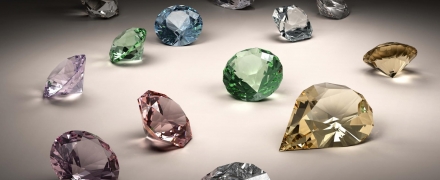open 10 am - 7 pm
laboratory is closed
The history of the appearance of cubic zirconia

For the first time, a polycrystalline aggregate of zirconium oxide stabilized in a cubic system was obtained in the form of ceramics in the 1940s. Later, in the period 1970-1972, a monocrystalline material suitable for use in the manufacture of jewelry inserts cubic zirconia was developed at the Physics Institute. P.N. Lebedev of the USSR Academy of Sciences. Oxides of such metals as magnesium (Mg), calcium (Ca), yttrium (Y), scandium (Sc), samarium (Sm), europium (Eu), gadolinium (Gd), thulium (Tm ), ytterbium (Yb), lutetium (Lu), praseodymium (Pr), holmium (Ho) and others. The main direction of using cubic zirconia was the use in the production of high-resolution optics capable of operating in conditions of high temperatures and corrosive environments. At the same time, industrial technologies for the synthesis of cubic zirconia were developed and began to be introduced. The industrial production of a new artificial material for jewelry inserts began in 1972, and by 1976 the Soviet industry had mastered the production of a new jewelry material with the widest range of colors, including blue, green, and stones with alexandrite-like optical effect. Cubic zirconia and cubic zirconia-like materials are produced all over the world under various proprietary names, determined by the peculiarities of the production method. Despite the relative youth of this material, cubic zirconia inserts can also be found in items of the 19th century, and there is a cut made in the style of the corresponding time of manufacture of the item, including the old one. For example, we know of cases of installing cubic zirconia cut "Old Mine cut" in antiques instead of lost diamonds.
В геммологической практике бывают весьма увлекательные случаи с диагностикой ювелирных вставок
Но помимо редкости цвета и высокой стоимости таких камней, многие розовые камни выделяются одной замечательной особенностью – они проявляют плеохроизм, то есть в зависимости от положения осмотра камня он может иметь дополнительные оттенки – оранжевый или пурпурный.
Currently, gemstones are produced by two fundamentally different technological methods - the High Pressure - High Temperature method (“HPHT”, High-pressure & High-temperature) and the Chemical Vapor Deposition (“CVD”, Chemical vapor deposition) method. The "HPHT" method is the most tested classical synthesis method, which can be used both carbon deposition on diamond from flux melts and catalytic reactions. In "CVD" synthesis, diamond growth occurs on a seed during carbon deposition mainly from a gaseous medium at relatively low temperatures and pressures.
Jewelry and precious stones are just such a category of goods, when buying which you need to pay attention to many criteria.
Sogdianite is a rather rare mineral and more often it can be found as a collection material (moreover, in systematic collections), and it is extremely rare in jewelry.






